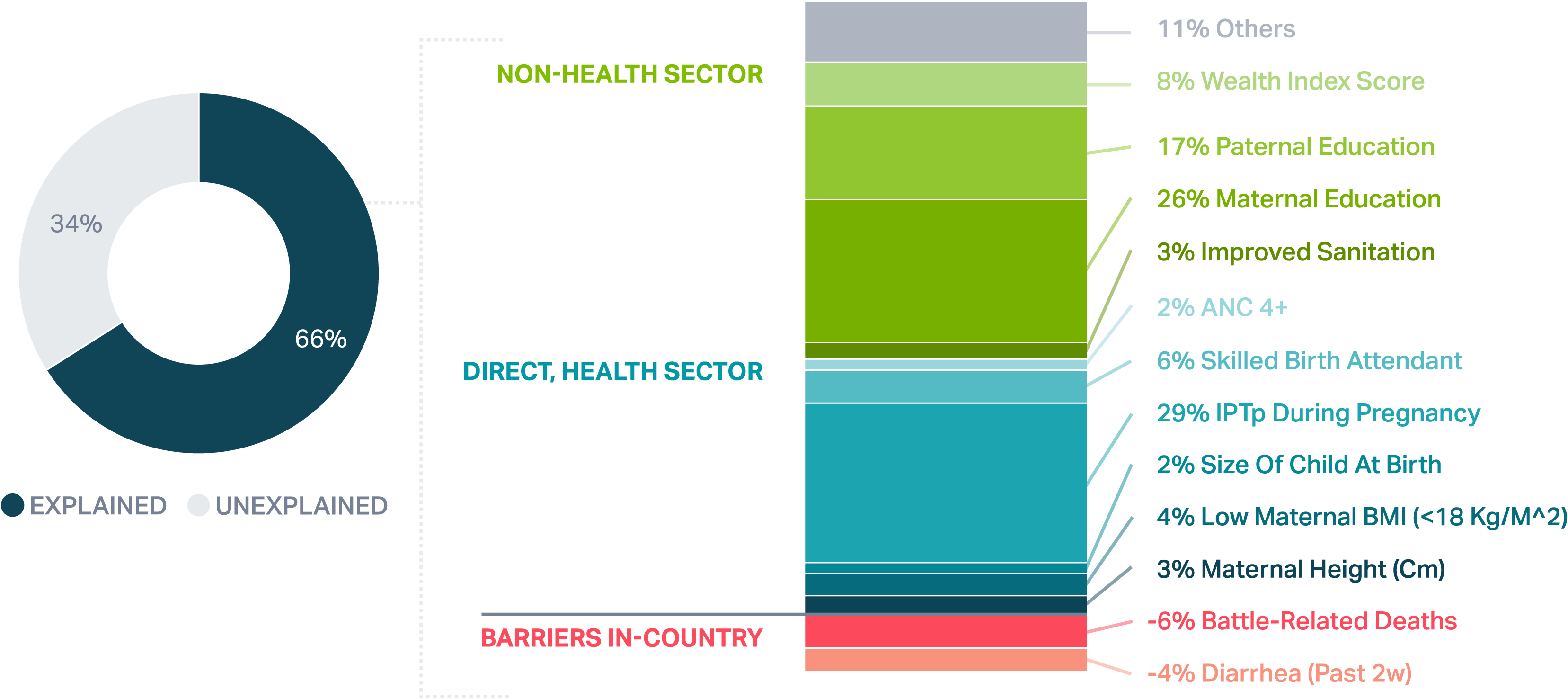Subnational Study on Stunting in Nigeria
What was the problem to be solved?
University of Ibadan and the Centre for Global Child Health at The Hospital for Sick Children (SickKids) conducted research to identify key factors to reduce stunting in Nigeria. The research was conducted following the Nigeria Governor’s Convening in November 2019 with the Aliko Dangote Foundation and the Bill & Melinda Gates Foundation. During this meeting, participants expressed interest in collaborating with Exemplars in Global Health to conduct a subnational research study in Nigeria to help accelerate progress in stunting reduction. The subsequent research project provided actionable results for a wide range of stakeholders in Nigeria and was shared at the National Nutrition Data and Results Conference in Abuja, Nigeria in June 2022.
Download a study brief with a summary of research findings hereImprovement in rates of stunting reduction in Nigeria were not commensurate with what would be expected based on significant economic growth. From 1990 to 2018, Nigeria’s GDP per capita increased by 250%, from US$568 to US$2,028. However, over the same period, reductions in national stunting prevalence have been modest, falling just over five percentage points from 43.1% to 36.8%.
Despite limited progress at the national level in Nigeria, some states were able to achieve faster rates of stunting reduction than others. Nigerian states were considered “Exemplars” in reducing stunting if their average annual rate of reduction in stunting prevalence was more than 0.8% between 2008 and 2018. On average, Exemplar states reduced stunting prevalence from 37% in 2008 to 24% in 2018., These states offer valuable lessons regarding key factors that contribute to accelerating stunting reduction and highlight successful practices for scaling up programming. In contrast, the remaining “opportunity” states saw a slight increase in stunting prevalence from 42% in 2008 to 43% in 2018.,
Because of this variation, research aimed to look closely at the period between 2008 and 2018 to understand what lessons can be learned from Exemplar states and how such lessons can be adapted into actions to improve nutrition and other human development priorities across Nigeria.
Identification of Exemplar and Opportunity states in Nigeria


What outcomes did we aim to explore?
The research conducted by the University of Ibadan, SickKids, and the Exemplars of Global Health team was designed to help answer three primary questions:
- Do differences between Exemplar and opportunity states reveal lessons about best practices and key policies that could have contributed to change?
- For Exemplar States, what conclusions, if any, can be drawn about key drivers for stunting reduction between 2008 and 2018?
- At a national level, why did stunting rates only see moderate reduction despite large increases in GDP per capita?
A mixed methods approach was used to conduct this research. First, a systematic search of peer-reviewed and grey literature was reviewed. This was followed by quantitative and qualitative analyses and complemented with policy and program reviews and financing analyses. Quantitative analyses were conducted using the Nigeria National Population Commission (NPC) and ICF Nigeria Demographic and Health Survey (DHS) from 2008 and 2018. Analyses included Oaxaca-Blinder Decomposition analyses which identify the drivers of stunting reduction in-country, and Risk Factor Analyses which identify variables or conditions that increase the likelihood of stunting in children under 5 years. Qualitative analyses included expert and community interviews to understand stakeholder and community perspectives on drivers of stunting decline.
Completion of this research provided a large body of evidence to analyze and build better understandings of what has occurred in Nigeria. After the triangulation of quantitative, qualitative, and policy analyses in conjunction with in-country experts, the following explanations emerged.
What were key drivers for stunting reduction nationally from 2008 to 2018?
National Nigeria Decomposition Analysis


Synthesized findings from Nigerian Exemplar states show a clear multisectoral story that highlights the importance of investment both within and outside of health systems.
How do we see research findings driving to impact?
Takeaways at the National level
Causes of maternal and child undernutrition are multifactorial and complex and addressing them requires action across multiple systems, including health, education, sanitation, food, and social protection. The framework below helps organize the key takeaways and highlight top priorities for the future.
